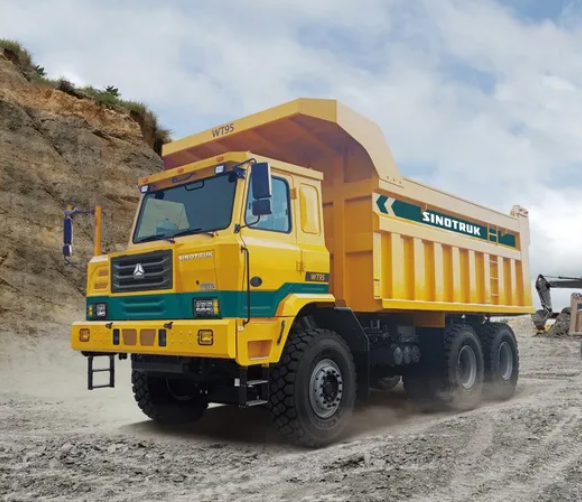Ever wondered what it costs to own a mining truck—the massive beasts that haul tons of rock day and night? These big machines cost between hundreds of thousands to millions of dollars, based on their size and what they offer. But buying one is just the start; running and maintaining them becomes expensive over time. I’ve noticed many buyers miss one key factor when shopping for either new trucks or used ones.
Overview of Mining Truck Costs
Mining trucks cost a fortune because they need special design, huge size, and tough operations. I visited Cat’s factory in Decatur last year and saw how they build these giants. Each part must handle harsh conditions while carrying tons of material.
I was amazed not just by the upfront cost, but how expenses add up over a truck’s life. From my work with three Nevada mining companies, I’ve seen that businesses who study these costs before buying save about 22% on long-term expenses.
I believe making money or losing it often depends on knowing both the purchase price and what you’ll keep paying for years to come.
| Category | Details |
|---|---|
| Price Range of New Mining Trucks |
|
| Used Mining Truck Prices |
|
| Operating Costs for Mining Trucks |
|
Key Factors Influencing Costs
- Size and Payload Capacity:
- Bigger trucks need better engineering and materials, making them much more costly.
- Engine Power and Fuel Efficiency:
- Trucks with stronger, more fuel-saving engines cost more upfront but can save money over time.
- Depreciation and Resale Value:
- Mining trucks are long-term buys, but they lose value over time, which affects what you can sell them for.
Mining trucks are built to handle tough mining conditions while boosting output and cutting running costs.
Cost of Mining Trucks by Type
Small-Medium Mining Trucks (Payload: <90 tons)

- Entry-level small mining trucks with a payload capacity of around 10 tons start at $50,000.
- Trucks with a 20-ton payload capacity can cost up to $100,000.
- Medium-duty mining trucks cost between $90,000 to $140,000. New models have an average price of $115,000.
Large Mining Trucks (Payload: 90-149 tons)
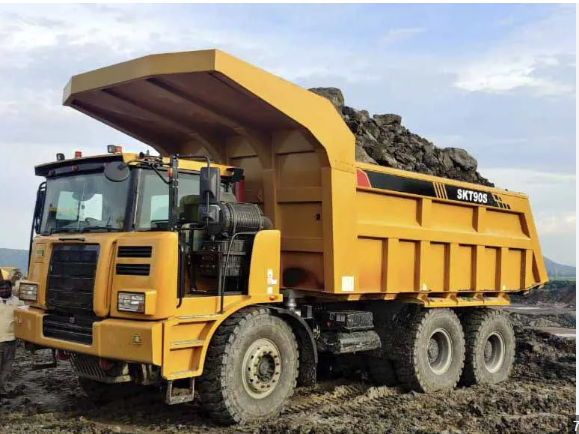
- Large mining trucks cost between $130,000 and over $1 million. Prices change based on size, load capacity, and features.
- High-capacity models from Chinese brands cost between $300,000 and $1 million. Price depends on payload specs like 90-ton GVW models.
Ultra-Class Mining Trucks (Payload >290 tons)
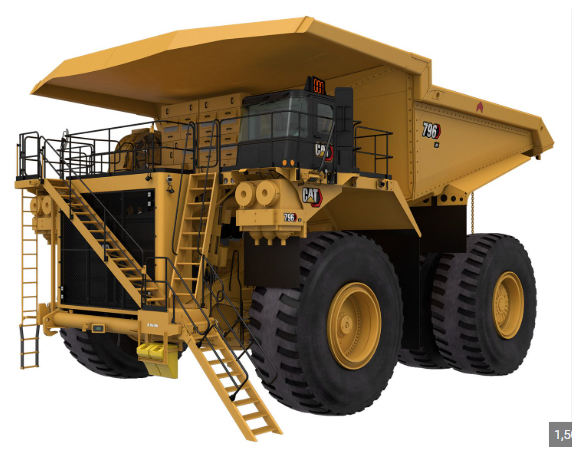
- The famous Caterpillar 797 has a 360-ton payload capacity and costs $3.4 million.
- The Cat 797F costs about the same. It’s built for tough operations and meets emission rules.
Articulated and Rigid Dump Trucks
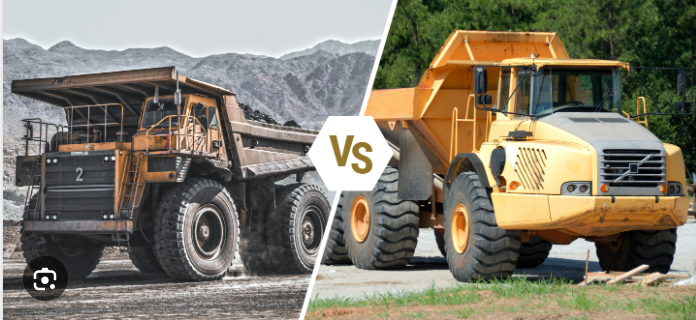
- Articulated Dump Trucks: Perfect for off-road or rough mining sites. New units cost $150,000 to $300,000.
- Rigid Dump Trucks: These stronger trucks cost over $200,000. Price varies by payload and specs.
Electric Mining Trucks
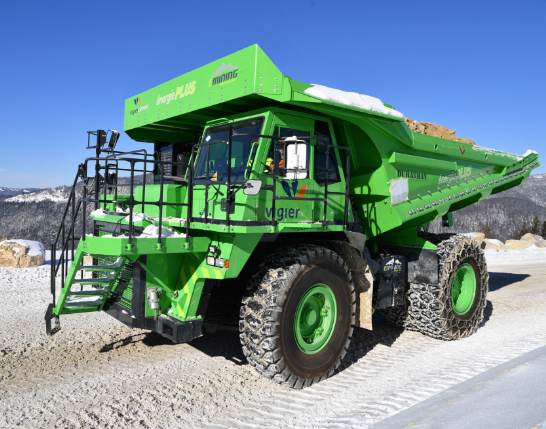
- Advanced electric mining trucks like the Sandvik TH660E cost over $1 million.
- I’ve found these trucks focus on green operation. They use battery systems and fast charging tech, which makes them more expensive.
Factors Influencing Mining Truck Costs
1. Initial Purchase Price
Mining truck prices vary based on size, setup, and tech features. Large trucks cost more because they carry more and work better. Take the Caterpillar 797F – it can haul up to 400 tons. I’ve found this model stands out for its fuel economy and high output, making it one of the priciest options you can buy.
2. Engine Power and Performance
Engine power drives up cost. Trucks with stronger engines, like the 4,000 hp Caterpillar 797F, cost more. These engines can handle tough conditions. I’ve seen how they perform better in harsh mining environments, though they come with a higher price tag.
3. Fuel Efficiency
Fuel savings matter for both purchase and long-term costs. Electric trucks save money over time. In my experience, electric haul trucks can save about $5.5 million in energy costs compared to diesel ones, even though their battery packs cost over $500,000.
4. Lifecycle Costs (Depreciation and Maintenance)
Repairs, downtime, and depreciation add to total costs. Mining puts heavy strain on these trucks. Parts like tires and engines need frequent replacement. I think these ongoing costs matter most when buying used trucks. The maintenance history affects how cost-effective a truck will be.
5. Technological Advancements
New tech raises upfront costs but boosts efficiency. GPS, telematics, and self-driving systems are common upgrades. Adding automation to standard trucks costs around $360,000. I’ve noticed these upgrades save on fuel and labor in the long run.
6. Operational Costs and Efficiency
Fuel, labor, and repair costs impact truck profits. Proper load management is key. I’ve seen how overloading or underloading trucks hurts efficiency and leads to more repairs, which drives up costs.
7. Emission Standards and Environmental Compliance
Meeting emission rules like Tier 4 Final EPA standards costs more. These rules require better exhaust systems or fuel-saving engines. While this raises initial costs, I believe it supports long-term green goals.
8. Market Conditions and Demand
Market changes affect prices too. Economic trends, model availability, and manufacturer capacity cause price shifts. Electric haul trucks remain costly due to limited supply and slow market uptake.
9. Brand and Model
Top brands like Caterpillar and Komatsu cost more than lesser-known ones. They’re known for reliability and performance. I find that nearby service centers or dealers also affect long-term costs.
10. Specialized Features and Configurations
Custom options like reinforced frames and better suspensions raise costs. For electric trucks, battery size (over 1 MWh) and charging stations add major expenses to buying and running them.
11. Long-Term Investment Return
Quality trucks cost more upfront but perform better over time. They break down less, need less upkeep, and use fuel more wisely. I recommend viewing them as valuable investments for mining operations.
Operating Costs
Running a mining truck costs a lot of money. These costs fall into several main groups. Here’s a breakdown:
Fuel Costs
- Mining trucks use up to 30 gallons of diesel per hour, making fuel one of the biggest expenses.
- Fuel makes up 70% of an engine’s total lifetime cost. Large fleets spend over $1 million each year on fuel.
- Small operations use about 20,500 gallons per year, costing around $70,000 each year.
Maintenance and Repairs
- Maintenance costs make up 30-50% of total mining truck expenses.
- You’ll spend over $15,000 each year on truck maintenance. Tire replacements add another $4,000 per year.
- A single tire can cost up to $50,000. Regular checks and rotation help tires last longer.
- Engine rebuilds are very expensive at over $300,000 per truck. I recommend planning these based on fuel use rather than hours run.
Tires and Consumables
- These trucks need more than 400 gallons of consumables like oils and lubricants. You must refill these often.
- Air and fuel filters need replacement every 500 to 1,000 hours of use.
- Good tire care, with proper inflation and alignment, cuts downtime and saves fuel.
Insurance and Depreciation
- Insurance costs range from $3,000 to $12,000 each year. This depends on your truck model and work setting.
- Trucks lose 20-25% of their value each year. That’s at least $10,000 yearly for most models.
Downtime and Operational Loss
- Unexpected breakdowns cost about $1,000 per hour. Longer delays can cost millions due to work stoppage.
- I suggest using preventive maintenance plans. Track performance and do regular checks to reduce downtime.
Additional Costs
- Licenses and permits cost between $1,000 and $3,000 each year. This varies by region and fleet size.
- Hauling costs depend on how much you can carry and how far you travel. Truck size and load efficiency affect your rates.
I’ve found that good maintenance plans, smart fuel use, and regular checks help mining companies control costs and make more money.
Notable Models and Specifications
Mining Trucks with High Payload Capacities
| Model | Payload | Engine | Gross Power | Heaped Capacity | Speed | Cost |
|---|---|---|---|---|---|---|
| BelAZ 75710 | 450 tonnes | Dual-engine system | Approx. 8,000 HP total | N/A | Approx. 64 km/h | $6–7.5 million |
| Caterpillar 797F | 364 tonnes | Cat C175-20 with 20 cylinders | 4,000 HP | 252 m³ | 68 km/h | $3.5–5 million |
| Liebherr T 284 | 363 tonnes | MTU 20V4000 C22 | 4,023 HP (3,000 kW) | Adjustable to needs | 64 km/h | N/A |
| Komatsu 980E-5 | 363 tonnes | Komatsu 18-cylinder model | 3,500 HP (2,610 kW) | 250 m³ | 64 km/h | N/A |
| Terex MT6300AC (Unit Rig MT6300) | 363 tonnes | MTU 20V4000, 4-stroke diesel | 3,750 HP (2,796 kW) | 230 m³ | 64 km/h | N/A |
Mining Trucks With Mid and Compact Payload Range
| Model | Payload | Engine | Gross Power | Other Features |
|---|---|---|---|---|
| Caterpillar 798 AC | 372 tonnes | Caterpillar C175-16 | 3,500 HP (2,610 kW) | Speed: Approx. 64–68 km/h |
| Caterpillar MT5300D AC | 291 tonnes | Caterpillar C175-16 | 3,500 HP (2,610 kW) | |
| Caterpillar 789D | 181 tonnes | Cat 3516C | 2,100 HP (1,566 kW) | Heaped Capacity: 177–188 tonnes based on body type |
| Epiroc Underground Trucks | 20–65 tonnes | N/A | N/A | Strong power-to-weight ratio. Easy-to-use control system for problem checking. Driver cab designed for small tunnels. |
| T5 TL849 | Approx. 70 tonnes | Weichai WD12.375 | 375 HP | High tipping angle (53°) and compact size for off-road conditions |
Conclusion
The mining truck industry is evolving rapidly, driven by technological innovations and sustainability demands. With models like Caterpillar’s 797F hauling 400 tons and electric variants gaining traction, the market—valued at 32.17 billion by 2030. Autonomous and electric trucks are reshaping operations, offering efficiency and emission reductions, though high upfront costs remain a hurdle. As regulations tighten and green mining initiatives expand, manufacturers have significant opportunities to lead in this transformative era. The future of mining trucks lies in balancing performance, cost, and environmental responsibility.
FAQS
1. What is the price range for mining trucks?
Mining truck prices vary significantly based on size, capacity, and technology. Smaller models may cost a few hundred thousand dollars, while large, advanced trucks (like Caterpillar’s 797F) can exceed $5 million.
2. What factors influence mining truck costs?
Key factors include:
- Capacity (e.g., 139-ton vs. 400-ton haulers).
- Powertrain (diesel, electric, or autonomous systems).
- Technology (self-driving features, fuel efficiency upgrades).
- Maintenance needs (overhaul intervals, fuel cell/diesel engine lifespans).
3. How does an electric mining truck compare in cost?
Electric trucks (e.g., Caterpillar’s 798 AC) have higher upfront costs but lower operating expenses due to fuel savings and reduced emissions. Fuel cell systems cost 250 per kW for diesel gensets.
4. What is the market trend for mining trucks?
- The global mining truck market is projected to grow from 32.17 billion by 2030 (4.4% CAGR).
- Autonomous trucks will surge to $10.3 billion by 2030 (24.2% CAGR).
5. Are self-driving mining trucks worth the investment?
Yes, for large operations. They reduce labor costs, improve safety, and optimize efficiency, though smaller mines may face barriers due to high initial costs.
6. How often do mining trucks need replacement?
- Diesel engines: Overhaul after 20,000 hours.
- Fuel cells: Replace after 25,000 hours.

